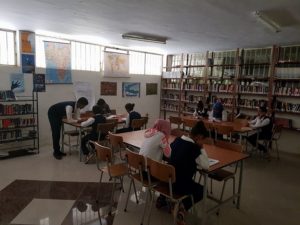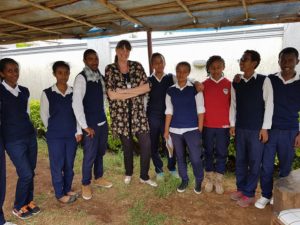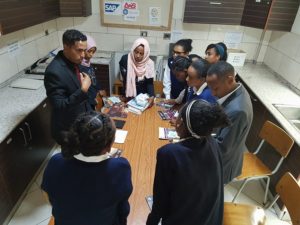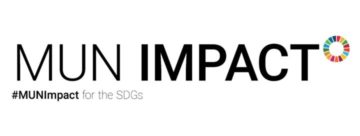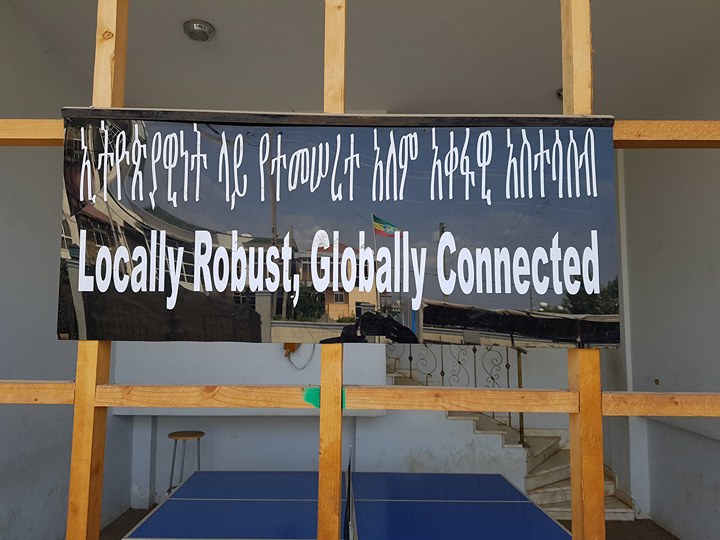By Lisa Martin
__________________________________________________________________________
In March, I found my way to Addis Ababa, Ethiopia. I came on a mission-to find an emerging MUN Club to collaborate with and bring to THIMUN Qatar 2019. Lebawi Academy’s new MUN program had huge aspirations, and I wanted to meet the MUN Director and their students. The Lebawi Academy MUN Club did not disappoint, and I was treated to a spectacular day, meeting some incredible students, teachers and school administrators. By the time I left I knew I had located the perfect school with which to collaborate, and I will leave it to the Lebawi and Qatar Academy Doha students to share their stories as their emerging collaboration develops.
I spent the morning visiting different clubs at the school: meeting with the student government, the girl’s empowerment club, the girls who code. The morning was filled with incredibly engaged students sharing their projects and stories, and by lunch I was already overwhelmed by the positive energy. It was a day of many superlatives, from the excellent tour of the school to the amazing lunch, and a visit to the school’s small special needs classroom, but there was one interaction with students left a profound impact on me, and has informed some of my thinking on MUN Impact moving forward.
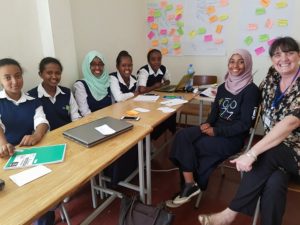 Gathered in a small classroom, I listened to this articulate group of young women explain project after project they were working on. From maternal health and FGM to access to higher education and technology innovation projects they were working on. I began to see a pattern…each of the projects they were describing were related to an SDG, and in almost all cases, a specific target. I finally stopped the conversation and said “Do you REALIZE that what you are doing, all of these programs, are supporting the SDGs?” And after some silence I asked “How many of you know what the SDGs are?” A few tentative hands were raised, but generally speaking, this was a term that had little currency with the group.
Gathered in a small classroom, I listened to this articulate group of young women explain project after project they were working on. From maternal health and FGM to access to higher education and technology innovation projects they were working on. I began to see a pattern…each of the projects they were describing were related to an SDG, and in almost all cases, a specific target. I finally stopped the conversation and said “Do you REALIZE that what you are doing, all of these programs, are supporting the SDGs?” And after some silence I asked “How many of you know what the SDGs are?” A few tentative hands were raised, but generally speaking, this was a term that had little currency with the group.
I went on to explain that quite unknowingly, they were part of a huge global movement, an international commitment by the United Nations to address multiple complex issues that underpin sustainable development. Did they know they were part of something that was actually a massive global undertaking? They had not, they told me, but a current of energy pulsed through that room in what teachers know to be those exquisite, teachable moments. And when I asked if they wanted to be connected to this larger movement, and to act as role models within it, the answer was ‘Of course’.
In my final meeting that day with the school leadership, I shared my observation on this unintentional SDG alignment. I commended them on the service ethic that seemed to be a part of every aspect of the school and suggested that there might be real value in taking a closer look at their programs and searching for further SDG alignment. But it was the Assistant Dean of the School who put this SDG discussion into context. He said the the average person in Ethiopia saw the SDGs and something designed by distant elites, something that had little relevance to the average person. And yet, ironically, the entire school, with its service ethic, was deeply committed to those very goals and was working to solve them every single day!
It led me to ask myself a number of questions. How many young people were engaged in supporting the Goals without knowing it? How many school programs could be linked/aligned directly to the SDGs by simply evaluating their programs? Is simply knowing that your work supports the Goals of value in and of itself and is there synergy that comes from identifying your initiatives as part of a larger movement? How could this enormous chasm between local action and goals formulated by ‘distant elites’ be bridged? Was there a role for young people to play in narrowing this gap, making the Goals accessible in some kind of meaningful way to local communities? Could students mentoring students be part of this solution? Could MUN be a vehicle for delivering SDG awareness and a space for young people to engage in UN mandates (content), their communities (through action) and by collaborating with one another to bring the change needed to make the Goals attainable?
I think Model UN has an enormous role to play in bridging this chasm. This high school aged demographic, eager to work to support the Goals and larger mandates of the United Nations, seems to be both underutilized and only minimally engaged by the UN itself. When the different rules of procedure and the false dichotomy of what makes MUN, well ‘proper MUN’ is removed, and the competitiveness gets stripped away from conferences, something very different emerges. This is what MUN Impact has discovered: a groundswell of enthusiasm for ‘doing something’ with the knowledge gained through MUN participation. If we can purposefully connect MUN delegates around the world to ask these bigger questions about successfully attaining the Goals, and to facilitate opportunities to work together, something powerful will emerge.
The future of MUN will be found in places like Lebawi Academy. With the help of MUN Impact, this club and others like it can pivot together into something more powerful than just debate. This is a global community ready to lean in and support the UN through action. Now is the time to take words off a resolution and apply them to the challenges we face. I think our delegates are ready for this challenge.
